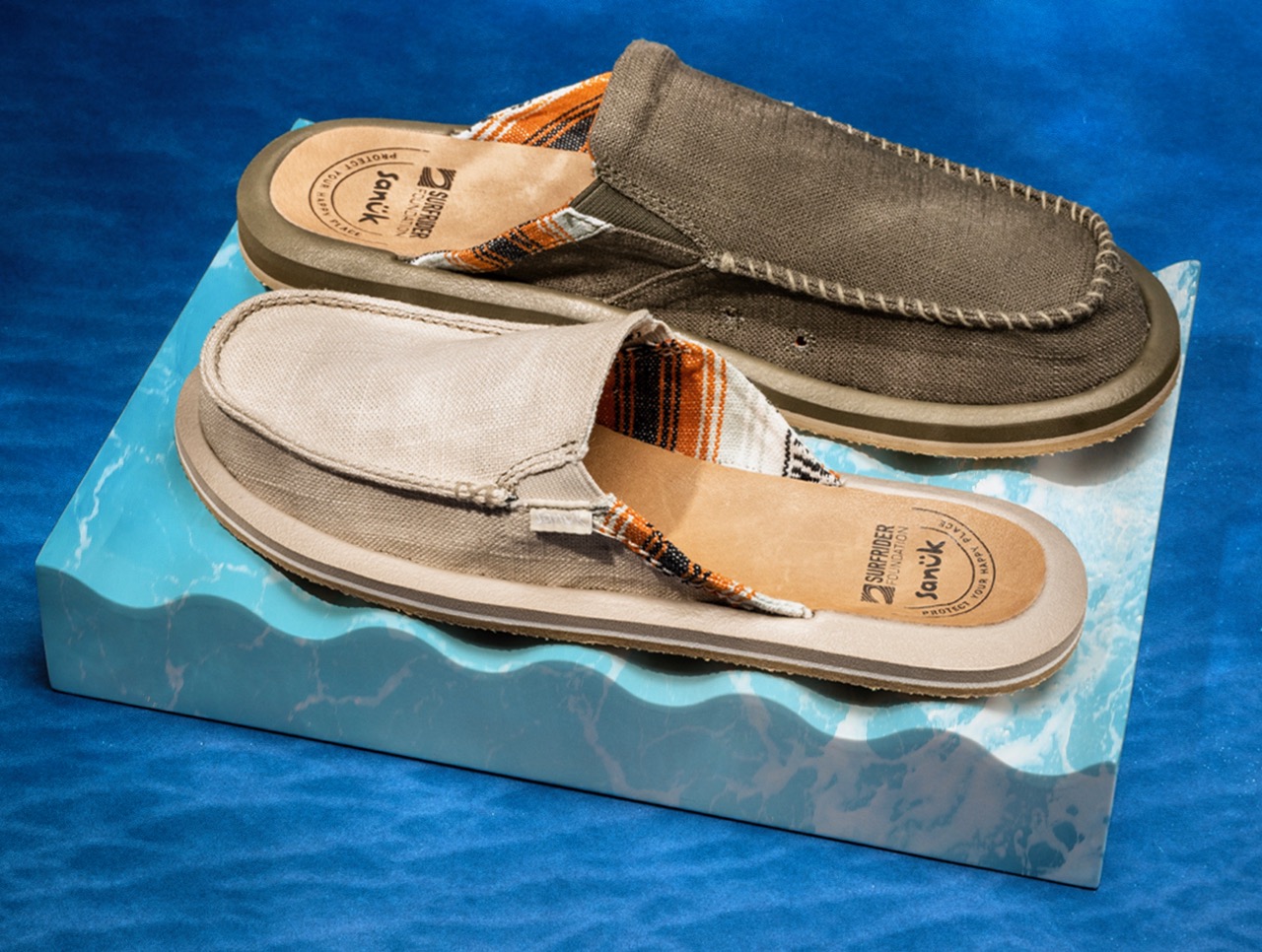The last few years have been tough for Sanuk, even before COVID-19 hit. The good news is owner Deckers Brands has moved Sanuk into a new operating group focused on innovation that is headed up by the co-founder of running shoe brand Hoka One One.
As Sanuk prepares to celebrate 25 years in business next year, GM Erik Ecklund answers some questions for us about the brand’s challenges and how the team is working to turn things around.
According to Deckers, Sanuk’s annual revenue fell 18% to $41.8 million in the company’s recently ended fiscal year.
Deckers reported that Sanuk revenue fell again last fiscal year and is now below the annual sales when Deckers acquired the brand. Why has business been so tough for Sanuk the past several years?
Sanuk GM Erik Ecklund: I’ll answer your question in two parts, starting with the financial results in our most recent fiscal year ending March 31, 2021. Our decline over this last fiscal year was unexpected and driven by the COVID-19 pandemic. During our scenario planning in March of 2020, while faced with widespread retail closures and many uncertainties, we planned our business down and restructured to pandemic proof the brand. As a result of swift decision making and efficient inventory planning, we managed to exceed our COVID revenue targets, maintain strong profitability and grow our e-commerce business by over 40%.
In the few years leading up to COVID, it is no secret that Sanuk had experienced its fair share of challenges. The majority of our decline since 2017 can be attributed to the decline of our iconic Yoga Sling 2, which has been knocked-off by many brands and receded in popularity when casual slides and sport sandals gained momentum. We also made some difficult strategic decisions to right-size our distribution to focus on customers, markets and channels where we can build strong, efficient, long term relationships. While these decisions had an impact on sales in the short term, they also increased profitability and helped establish a healthy foundation to build Sanuk’s future.
I heard that Sanuk has recently been moved to a new operating structure. Is that true, and if so, how does that work?
Erik Ecklund: In May of 2020 the Sanuk brand made an exciting move into the Deckers Innovation Group. Sanuk has always been a leader of innovation in our space, and this move was intended to expand our capabilities and resources in the spirit of product innovation.
Under my continued direction, the brand now rolls up under the executive leadership of Jean-Luc Diard, Co-founder of Hoka and VP of Deckers Innovation. This move has opened a lot of doors for Sanuk. We now have the ability to deliver new, innovative products with enhanced comfort, more sustainable materials and new technologies at a much faster pace. The products that are already coming out of our collaboration with the innovation team are exciting, and it feels like the brand is back on track to lead through innovation once again.
In terms of brand management, Seth Pulford remains as our Director of Marketing and we are happy to share that we’ve appointed a new Director of Product, Katie Pruitt, who headed up product development for the brand over the past 10 years.
What are some key initiatives the brand is launching to return the brand to growth?
Erik Ecklund: We have a lot of exciting initiatives in motion that will ultimately lead to Sanuk’s future state of growth, although we’ve set conservative revenue targets for the current fiscal year. This will be a year to reset and prepare for healthy, long-term, sustainable growth, which will begin in Spring 2022.
We are focused on a number of strategic initiatives starting with a return to innovation on the product side with an emphasis on comfort and sustainability. This is already taking shape as we’ve begun to modernize our core, classic styles, with Soft Top Comfort and better materials, while also introducing relevant newness in a limited capacity through buzz-worthy collaborations and stories that drive consumer demand.
In terms of marketplace management, we are rolling out a product segmentation strategy that will reduce price competition, build demand with product marketing stories and provide a unique point of difference across channels. Additionally, we are focused on passing on smiles to future generations through sustainability initiatives and welcoming new consumers into the brand through our inclusive brand voice, visuals and other DEI efforts.
Are you seeing any bright spots in the business?
Erik Ecklund: Overall, our digital business has remained strong over the past 12 months with all the retail brick-and-mortar closures from COVID. Now that brick-and-mortar partners have opened back up, business has drastically improved compared to Q1 and Q2 last year.
We’ve begun to see promising sell through of our new Soft Top collection over the past few months and our order book is strong for the remainder of this calendar year.
We are very confident that our Spring 2022 bookings will reflect the same positive momentum, which should lead us to achieving our financial targets for Fiscal Year 2022.






